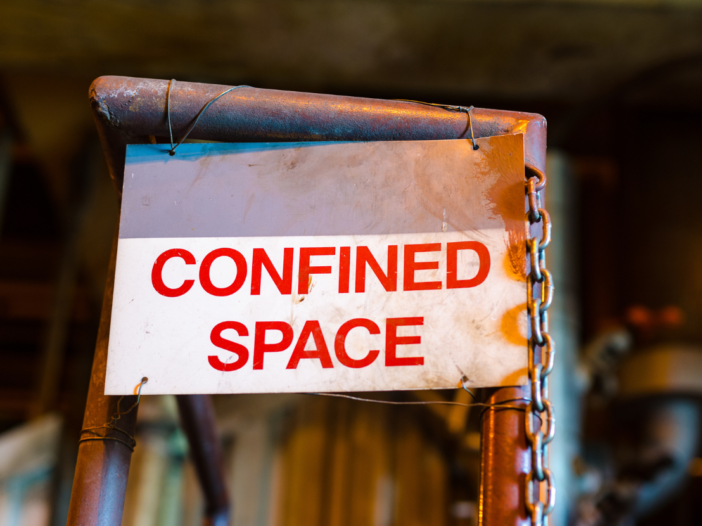
Asbestos remains the leading cause of work-related deaths in the UK, with around 5,000 fatalities each year. Once a widely used material, asbestos was banned in 1999 due to its serious health risks. If disturbed, asbestos releases harmful fibres into the air, which, when inhaled, can cause life-threatening illnesses many years later.
This means it is crucial to know how to test for asbestos, what the process involves, where asbestos might be found and who is at risk of exposure.
What is asbestos?
Asbestos is a general name for naturally occurring silicate minerals that form microscopic fibres. There are three main types of asbestos:
- Chrysotile – known as white asbestos, which was fully banned in 1999.
- Amosite – known as brown asbestos, which was banned in 1985.
- Crocidolite – known as blue asbestos which was banned in 1985.
Asbestos was a widely used construction material from the 1950s. A strong and cheap mineral, asbestos’ heat-resistant and electrical insulation properties made it ideal for use in fireproofing and insulation.
Although it is no longer used, many buildings and materials made before 2000 may still contain asbestos. This is why testing material for asbestos is essential for safety.
Who is at risk of asbestos exposure?
Construction workers, carpenters, plumbers, electricians, plasterers, painters and other tradespeople are at greatest risk from asbestos exposure. Less obvious trades, such as telecommunications engineers, computer and data installers, shopfitters and ventilation engineers are also at risk if their work involves disturbing materials that could contain asbestos.
Workers are most at risk when working in premises that were built before 2000, especially if they are working at unfamiliar sites where a survey and risk assessment have not been carried out or information has not been provided by the duty holder.
Risks increase where workers have not had approved asbestos awareness training for the type of work to be undertaken, supported by clear instruction and relevant information about the premises or equipment.
What are the health risks of asbestos exposure?
If asbestos containing materials (ACMs) are left intact, asbestos poses little risk to health. It is only when the fibres are released into the air and are inhaled that health is at risk. Fibres can be released during maintenance, repairs, refurbishment and demolition where the fabric of the building is disturbed during cutting or drilling.
Inhaling asbestos fibres can lead to many serious illnesses, although it can be decades after exposure that these health issues are triggered:
- Mesothelioma – a form of lung cancer that affects the lining of the lungs and lower digestive tract.
- Asbestos-related lung cancer – a form of lung cancer triggered by asbestos.
- Asbestosis – scarring of the lung with symptoms including wheezing, persistent cough and chest pain.
- Pleural thickening – causes shortness of breath and chest discomfort due to thickening of the lining of the lungs.
- Heart disease and strokes.
Where can you find asbestos?
ACMs are common in premises such as warehouses, factories, colleges, schools, shops and offices, and typically include:
- Asbestos insulating board (AIB), used in ceiling tiles, partition walls, fire door panels and soffits.
- Asbestos cement, used in gutters, roofing, water tanks and cement panels.
- Textiles, such as fire blankets and vinyl floor tiles.
- Sprayed coatings, such as on ceilings, beams, walls and columns.
- Insulation, such as loose-fill insulation, and lagging for boilers and pipes.
Residential buildings, such as care homes and hotel accommodation, may feature ACMs such as:
- Insulation, such as lagging and loose-fill insulation.
- AIB such as behind fireplaces, behind fuse boxes and in ceiling tiles.
- Toilet seats, toilet cisterns and roofing felt.
If in doubt, it is best to assume the premises contains asbestos until you can confirm otherwise with the duty holder or through asbestos surveys and testing.
What can asbestos be mistaken for?
Asbestos can often be mistaken for other materials, which is why asbestos material testing is important. It can be found in insulation, ceiling tiles, vinyl flooring, and fireproofing materials. Asbestos flooring can look similar to regular vinyl tiles but usually has a fibrous, rough underside.
Asbestos is often mistaken for materials like fibreglass insulation or certain types of plaster. This is why it is vital to arrange a professional asbestos test to confirm its presence.
How can asbestos be identified?
To determine if asbestos is present, an asbestos test must be carried out by a competent contractor (see ‘Who can test for asbestos?’ below). If you are unsure whether a material contains asbestos, it is best to err on the side of caution and assume it does until proven otherwise.
Who can test for asbestos?
Only competent, licensed contractors can take samples of suspected ACMs and they must adhere to strict safety procedures. They cannot analyse the samples themselves and must send them to a UKAS-accredited laboratory for analysis.
How do I test for asbestos?
Asbestos material testing happens as part of a management or refurbishment and demolition survey. Testing for asbestos usually involves taking single or bulk samples under strictly controlled conditions by a competent person and sending them to a UKAS accredited lab for analysis (see above). This is essential before any work is carried out that may disturb ACMs.
Testing material for asbestos involves several stages:
- Preparing for a test
- Testing for asbestos
- Developing an asbestos risk register and management plan.
How much does it cost to test for asbestos?
The cost of testing material for asbestos depends on the extent of the survey and the number of samples taken. For a commercial premises, costs vary from £200 to £15,000.
How long does it take to test for asbestos?
It can take a few days to a week to get the results from a laboratory after samples are collected. However, urgent tests can sometimes be arranged at an additional cost.
How to prepare for asbestos testing
Create a plan
Decide who will be responsible for asbestos management, including arranging testing, monitoring and communicating results.
The duty holder must maintain an asbestos register listing the location of ACMs, set up a schedule for monitoring the condition and create a management plan for informing those that may be at risk from ACMs. Those who may be at risk include people resident at the premises and those who may visit periodically to undertake work on the fabric of the premises.
Survey the building
Locate any previous records of ACMs. You may need to contact your facilities management company if this is outsourced, as well as check with suppliers, construction companies that have worked on-site and previous owners to determine if any ACMs are present.
If you are unsure, you must arrange an asbestos management survey. If you do not carry out an ACM survey, you must assume that all materials are ACMs and control accordingly.
Decide on the type of survey required
There are two types of asbestos survey – an asbestos management survey, and a refurbishment and demolition survey. The survey chosen depends on the work intended to be carried out.
| Asbestos management survey | Refurbishment/demolition survey | |
| Why conduct this survey? | Plan how ACMs on-site are managed during normal occupation, ensuring ACMs are identified, are in good condition and are undisturbed. | Locates and identifies all ACMs before structural work commences to ensure no-one is harmed from ACMs and work is carried out properly. |
| Type of test | Site survey and minor materials assessment. | Site survey including destructive inspection and ACM disturbance. |
| Expertise | May require a trained specialist. | Requires a trained specialist. |
| Records | Records the condition, location, type and results from any materials assessment. | Does not record the condition of ACMs, as these will be properly removed during demolition. |
WARNING! NEVER BREAK OFF, DRILL, ABRADE OR DISTURB ANY MATERIAL THAT COULD CONTAIN ASBESTOS.
Asbestos safety
- NEVER break off or disturb suspected ACMs.
- Avoid contamination and exposing anyone to dust or particles from ACMs.
- Engage a competent surveyor to conduct the survey.
- Ensure all worker awareness training is undertaken.
- Based on the findings of a survey create an asbestos risk register and management plan, including ACM locations and place warning signs near ACMs where possible.
- If you discover ACMs during refurbishment STOP WORK IMMEDIATELY AND REPORT TO THE CLIENT OR DUTY HOLDER.
Asbestos awareness training – a legal requirement
Control of Asbestos Regulations 2012 requires duty holders of premises such as offices and warehouses to manage any asbestos on-site, including ensuring awareness and training for employees who may come into contact with asbestos.
Find out more about our IATP and IOSH-accredited Asbestos Awareness training on our website or contact our friendly team today on 0203 011 4242/info@praxis42.com




